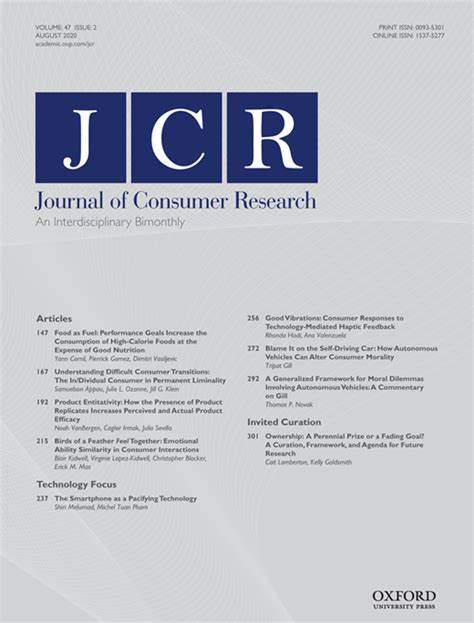Mixed Couples, Mixed Attitudes: How Interracial Couples in Marketing Appeals Influence Brand Outcomes
IF 6.4
1区 管理学
Q1 BUSINESS
引用次数: 0
Abstract
Interracial couples are increasingly featured in marketing messages, yet little is known about how their representation influences consumer behavior. Across six experiments (N = 4,956) and a field study on Facebook, interracial couples in marketing appeals enhance brand outcomes relative to monoracial dominant (ie, White) couples, but decrease brand outcomes relative to monoracial nondominant (ie, minority) couples. These effects stem from how the racial composition of dominant (vs. nondominant) members within a couple either amplifies or dilutes perceived warmth. Monoracial couples possess consistent stereotype attributes, with dominant (vs. nondominant) groups typically seen as lower in warmth. Thus, monoracial couple warmth is amplified: monoracial dominant couples are seen as less warm (ie, negative amplification), and monoracial nondominant couples as warmer (ie, positive amplification) than the individuals in the couple. Interracial couples possess inconsistent racial attributes, inducing stereotype dilution with intermediate levels of perceived warmth. Warmth drives brand outcomes above and beyond brand diversity, social desirability, and brand morality. Effects are moderated by consumers’ social dominance orientation and whether the monoracial dominant couple is nondominant along another dimension (ie, sexual orientation). This work holds theoretical implications for stereotyping research and provides practical insight into multiracial marketing.混合夫妇,混合态度:营销诉求中的异族情侣如何影响品牌结果
跨种族夫妇越来越多地出现在营销信息中,但人们对他们的表现如何影响消费者行为却知之甚少。通过六项实验(N = 4956)和一项在 Facebook 上进行的实地研究发现,营销诉求中的跨种族情侣相对于单一种族占主导地位(即白人)的情侣会提高品牌效果,但相对于单一种族非占主导地位(即少数民族)的情侣则会降低品牌效果。这些效应源于夫妇中主导(与非主导)成员的种族构成是如何放大或稀释感知到的温暖的。单种族夫妻具有一致的刻板印象属性,占优势(与非占优势)的群体通常被视为温情度较低的群体。因此,单种族夫妇的温暖会被放大:单种族优势夫妇的温暖程度较低(即负放大),而单种族非优势夫妇的温暖程度则高于夫妇中的个人(即正放大)。异族夫妇拥有不一致的种族属性,从而导致刻板印象淡化,感知到的温暖度处于中等水平。温情对品牌结果的推动作用超越了品牌多样性、社会期望值和品牌道德。消费者的社会主导取向以及单种族主导夫妇是否在另一个维度(即性取向)上处于非主导地位,都会对效果产生调节作用。这项研究对刻板印象研究具有理论意义,并为多种族营销提供了实用见解。
本文章由计算机程序翻译,如有差异,请以英文原文为准。
求助全文
约1分钟内获得全文
求助全文
来源期刊

Journal of Consumer Research
BUSINESS-
CiteScore
12.00
自引率
9.70%
发文量
53
期刊介绍:
Journal of Consumer Research, established in 1974, is a reputable journal that publishes high-quality empirical, theoretical, and methodological papers on a wide range of consumer research topics. The primary objective of JCR is to contribute to the advancement of understanding consumer behavior and the practice of consumer research.
To be considered for publication in JCR, a paper must make a significant contribution to the existing body of knowledge in consumer research. It should aim to build upon, deepen, or challenge previous studies in the field of consumption, while providing both conceptual and empirical evidence to support its findings.
JCR prioritizes multidisciplinary perspectives, encouraging contributions from various disciplines, methodological approaches, theoretical frameworks, and substantive problem areas. The journal aims to cater to a diverse readership base by welcoming articles derived from different orientations and paradigms.
Overall, JCR is a valuable platform for scholars and researchers to share their work and contribute to the advancement of consumer research.
 求助内容:
求助内容: 应助结果提醒方式:
应助结果提醒方式:


